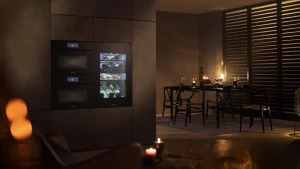
Let’s be honest—plumbing codes aren’t exactly dinner table conversation. But when 2025 rolls around, those updates could save you headaches (and cash). Here’s the deal: the new rules tweak everything from pipe materials to water efficiency. And if you’re planning a renovation or dealing with an older home? Well, this stuff matters.
Why the 2025 Plumbing Code Updates Matter
Think of plumbing codes like traffic laws for water. They keep things flowing safely—no leaks, no contamination, no surprise floods. The 2025 revisions focus on three big themes:
- Sustainability: Stricter water-saving rules (goodbye, wasteful fixtures).
- Safety: New backflow prevention requirements to avoid dirty water sneaking into clean supply lines.
- Material upgrades: Some older pipes? Officially outdated.
Key Changes Homeowners Should Watch
1. Water Efficiency Gets Serious
Low-flow toilets aren’t just polite suggestions anymore. The 2025 code slashes maximum flow rates for faucets (down to 1.2 gallons per minute) and showerheads (1.8 gpm). That’s a 20% drop from current standards. On the bright side? Your water bill might thank you.
2. Say Goodbye to Lead (For Real This Time)
Even trace amounts of lead in pipes or solder are now no-go zones. If your home was built before 1986, you’ll want a professional inspection. The new rules also ban certain brass fittings unless they’re certified lead-free.
3. Expansion Tanks Become Mandatory
Ever heard your pipes clanging like a ghostly xylophone? That’s water hammer—and the 2025 code requires expansion tanks on water heaters to prevent it. Small upgrade, big difference in noise (and pipe longevity).
What This Means for Renovations
Planning a bathroom remodel? Kitchen upgrade? Here’s the kicker: any permitted work must meet 2025 standards, even if your existing setup was legal last year. A few specifics:
- Replacing a sink? The new faucet must meet flow rate rules.
- Rerouting pipes? Lead-free materials only.
- Adding a second bathroom? Expect stricter venting requirements.
Pro tip: Always pull permits. Skipping them might mean redoing work later—or worse, insurance denying claims.
Older Homes: Special Considerations
If your house has that “vintage charm” (read: ancient plumbing), listen up. Galvanized steel pipes? They’re corrosion time bombs. The 2025 code doesn’t force replacements… yet. But if you’re opening walls anyway, swapping to PEX or copper could dodge future disasters.
And about those cast iron sewer lines—cities are cracking down on root intrusions. Some areas now require camera inspections during sales. Nasty surprise? Maybe. Cheaper than a collapsed line? Absolutely.
How to Prepare (Without Panicking)
First, don’t rip out functioning systems. Codes mostly apply to new work. But do:
- Audit your plumbing: Note pipe materials, fixture ages, and any “temporary” fixes (we’ve all been there).
- Budget for upgrades: Water-efficient fixtures pay off long-term.
- Find a code-savvy plumber: Ask how they’re prepping for 2025 changes.
Remember, these updates aren’t about hassling homeowners—they’re about avoiding moldy drywall, skyrocketing water bills, or (yikes) sewage backups.
The Bottom Line
Change is coming, sure. But it’s not about overhauling your home overnight. It’s about smarter upgrades, safer water, and—let’s face it—fewer midnight plumbing emergencies. Because nothing ruins a cozy evening faster than a burst pipe.







